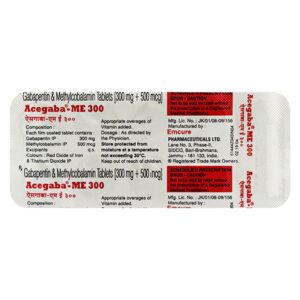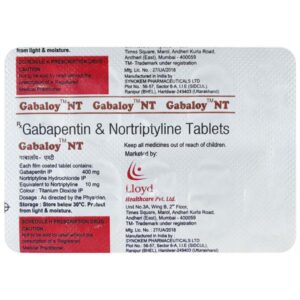GABAPENTIN + NORTRIPTYLINE
Gabapentin: Gabapentin is a medication used primarily to treat various types of seizures and to relieve nerve pain caused by conditions like shingles or nerve damage from diabetes. It may also be prescribed off-label for conditions such as migraines, restless legs syndrome, or fibromyalgia.
The exact mechanism of action of Gabapentin is not fully understood. However, it is believed to work by affecting certain chemicals in the brain and nerves involved in seizures and the transmission of pain signals. It is structurally similar to a neurotransmitter called gamma-aminobutyric acid (GABA) but does not directly interact with GABA receptors.
The usual starting dose of Gabapentin depends on the condition being treated. For seizures, the starting dose may be low and gradually increased over time. For nerve pain, the starting dose may be higher. The dose can range from 300 mg to 3600 mg per day and is usually divided into three doses.
Common side effects of Gabapentin include drowsiness, dizziness, fatigue, coordination problems, blurred vision, and weight gain. Some people may also experience dry mouth, constipation, or diarrhea. Rare but more serious side effects may include mood changes, depression, anxiety, or suicidal thoughts. It is important to consult a healthcare professional for a complete list of side effects and to discuss any concerns or existing medical conditions before starting Gabapentin.
Nortriptyline: Nortriptyline is a tricyclic antidepressant drug that is mainly used for the treatment of depression. It belongs to a class of drugs known as selective serotonin-norepinephrine reuptake inhibitors (SNRIs).
The precise mechanism of action of nortriptyline is not fully understood, but it is believed to work by increasing the levels of certain chemicals in the brain, such as serotonin and norepinephrine. These chemicals, also known as neurotransmitters, are involved in regulating mood and emotions. By increasing their levels, nortriptyline helps to alleviate symptoms of depression.
The usual starting dose of nortriptyline for adults is 25 mg per day, which is gradually increased under medical supervision to a maximum of 150 mg per day. The dose may vary depending on individual factors such as the severity of depression and patient response.
As with any medication, nortriptyline has potential side effects. These can include drowsiness, dizziness, dry mouth, constipation, blurred vision, weight gain, and sexual dysfunction. It is important to note that side effects can vary between individuals, and some may experience none or only mild side effects. If severe side effects occur or persist, it is recommended to consult a healthcare provider.
Nortriptyline should not be abruptly discontinued, as this can lead to withdrawal symptoms. It is advisable to gradually reduce the dose under medical supervision when discontinuing the drug.
It is crucial to follow the prescribed dosage and consult a healthcare provider before starting or stopping nortriptyline, as they can provide personalized advice based on an individual’s specific medical history and needs.






